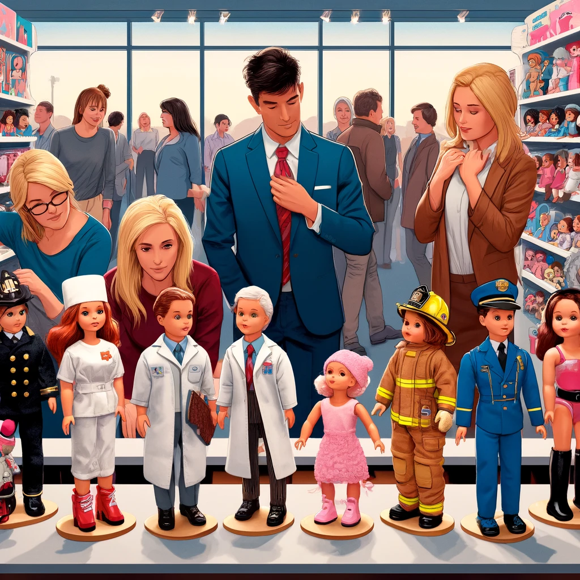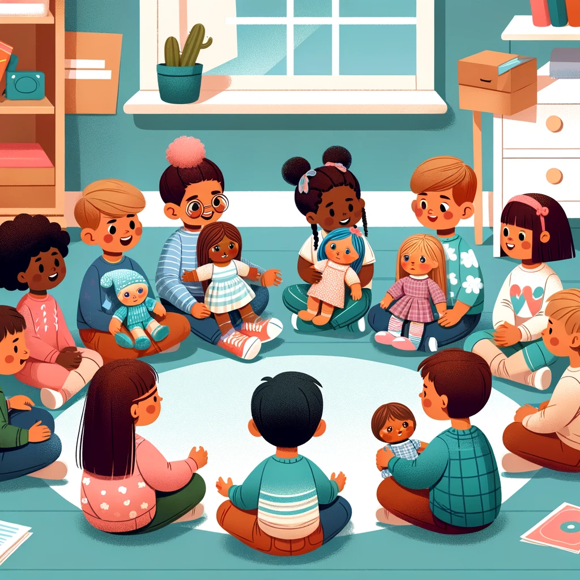Dolls have long been companions in the world of play, offering children a canvas upon which to project their imaginations. However, in recent years, a debate has emerged between the traditional realm of fictional character dolls and the rise of hyper-realistic alternatives. This discussion delves into the heart of childhood representation, the impact on young minds, and the societal reflections these dolls embody.
Fictional Character Dolls: A Gateway to Fantasy
Fictional character dolls, adorned with the likeness of beloved characters from literature, movies, and television, hold a cherished place in the hearts of many. They serve as vessels for storytelling, enabling children to recreate their favorite narratives or craft entirely new adventures. These dolls ignite creativity, sparking imaginative play that transcends the boundaries of reality.
For generations, fictional character dolls have been cherished companions, fostering emotional connections and serving as symbols of friendship and loyalty. They represent more than just plastic and fabric; they embody the intangible magic of childhood dreams and aspirations.
Realistic Dolls: Mirroring Diversity and Inclusion
In contrast, the emergence of hyper-realistic dolls has sparked a conversation about representation and inclusivity. These dolls aim to reflect the diverse tapestry of humanity, offering children the opportunity to see themselves mirrored in their toys. From varying skin tones and body shapes to disabilities and cultural backgrounds, realistic dolls strive to break the mold of traditional beauty standards and embrace the richness of human diversity.
Advocates of realistic dolls argue that representation matters, asserting that children benefit from seeing themselves represented positively in their toys. By providing a more accurate reflection of society, these dolls promote empathy, understanding, and self-acceptance.
Bridging the Gap: Finding Common Ground
While the debate between fictional character dolls and realistic dolls may seem polarized, there is room for reconciliation and synthesis. Rather than viewing these two approaches as mutually exclusive, they can complement each other, offering children a spectrum of play options that cater to their individual preferences and developmental needs.
One possible solution is the creation of fictional character dolls that embrace diversity and inclusivity. By reimagining iconic characters with a broader range of identities and experiences, toy manufacturers can bridge the gap between fantasy and reality, offering children the best of both worlds.
Moreover, fostering open dialogue and collaboration between creators, parents, educators, and child psychologists can lead to the development of toys that not only entertain but also educate and inspire. By prioritizing authenticity, empathy, and representation, the toy industry can play a pivotal role in shaping a more inclusive and equitable society.
Conclusion: Embracing the Power of Play
In the debate over fictional character dolls versus realistic dolls, the underlying goal remains the same: to provide children with meaningful and enriching play experiences that nurture their growth and development. Whether through the whimsical adventures of beloved characters or the reflective gaze of diverse and inclusive dolls, toys have the power to shape the way children perceive themselves and the world around them.
Ultimately, the most valuable toy is one that sparks joy, encourages creativity, and fosters empathy. By embracing the diversity of childhood experiences and perspectives, we can ensure that every child has the opportunity to see themselves reflected in the toys they love and cherish. In the end, it’s not about choosing between fictional fantasy and realistic representation but rather celebrating the kaleidoscope of imagination that makes childhood truly magical.



0 Comments